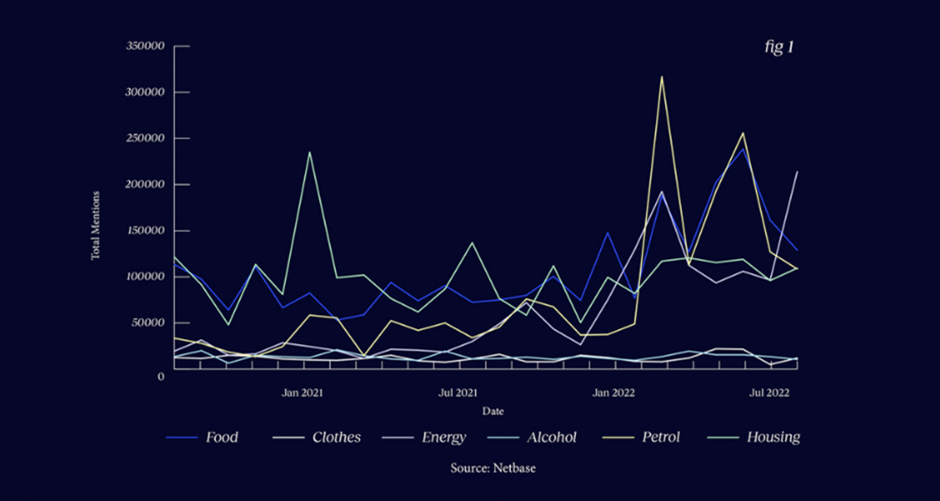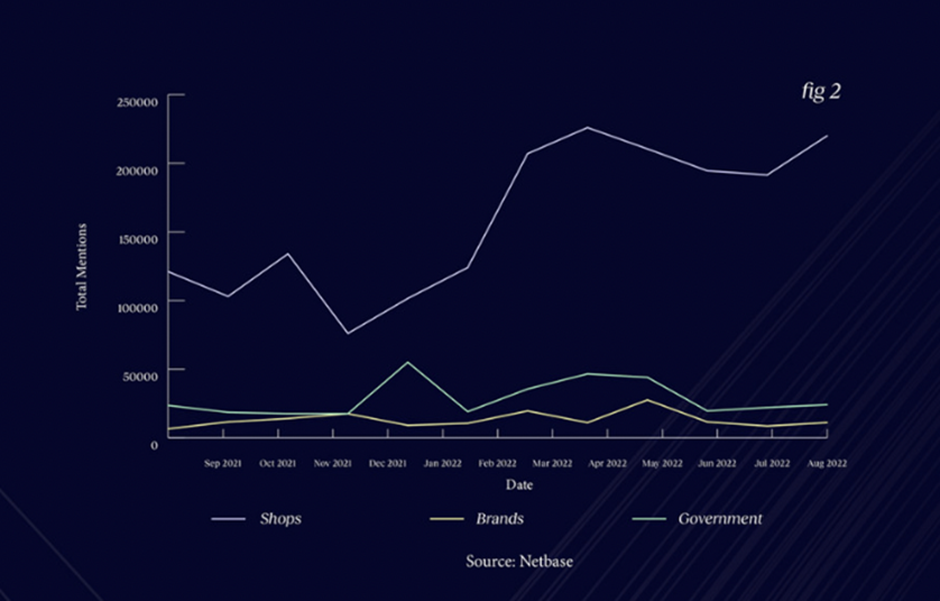
Dr. Martens champions sustainable fashion
Genix Nappa, a new material made of leather offcuts, aims to reduce waste

How brands can use social media to effectively communicate with consumers during the cost of living crisis

Price rises are never good news. And as you might expect, the biggest thing people expect from brands at the moment is to keep prices fair - the top priority for 57% of people according to the IPA.
Unfortunately, though, rising costs are part of the reality we’re suffering through, and many brands need to increase their prices to keep up. Given that social is one of the most direct conversations brands will have with customers, how should brands be communicating this?
We analysed the global social conversation around price rises - including phrases like ‘I can’t afford’, or ‘too expensive’ - to see what was gaining momentum. What sectors are most discussed?

It’s clear that price rises are most talked about within those essentials that we just can’t do without. Food, petrol, housing and energy are what people talk about most within this price-rise conversation. It’s clear there’s a jump in March 2022 - when petrol prices spiked, and the Cost of Living Crisis was starting to really peer around the corner.

It’s interesting to see that clothes and alcohol are not significantly increasing within this conversation. It could be that being unable to afford that new jacket isn’t so conversation-worthy as not being able to feed your family (who would’ve thought). Clothes and alcohol not expected essentials, they’re luxuries or ‘nice to haves’. There are also ways to reduce spending but still enjoy them; for example, drinking at home instead of drinking out. It’s not like you can downgrade your mortgage or rent payment the same way.
So things are bad and getting worse. But who’s being held accountable here? If we look at the social conversation, it’s clear there is but one culprit who’s drawing heat - the government. Whichever government that is, people are seeing the impacts on their lifestyle as being largely down to those individuals and parties at the top. They draw the most mentions within this conversation - far outstripping brands and shops (e.g. supermarkets).

Brands are not seen as being in control here; as we saw with the price rise of Lurpak (in our last issue of Chaos Theory), there was no lasting negative sentiment for the brand itself. £7 Lurpak was treated more as a sign of the times.
So all that said - how can brands approach the reality of price rises in the most appropriate way? Social is a tough landscape for bad news after all.
There are three principles we can pull out to guide brands forwards:
It’s important to be as transparent as possible, or as transparent as you’re comfortable with. A good example of this was Brewdog CEO James Watt - he posted on LinkedIn about how their beers were about to increase in price. The reasoning here was well explained - situating Brewdog within the context of cost of living, and giving clear reasons why this was happening. Choosing LinkedIn was a good channel here, as the debate tends to be more rational; if ever there was a place for a LinkedIn essay, this is probably it.
Not hiding behind vague statements and giving the exact facts helps - as does choosing the right channel to communicate. This is something customers will care about, so give it enough room - this isn’t one to cram into 280 characters.
Remember price rises have a real impact on customers lives - especially if you’re an ‘essential’ industry. Bearing this in mind alongside announcements is key; know there will be a human impact, whether rational or emotional, as some people will no longer be able to afford your product, or will need to make lifestyle changes in order to keep buying.
A robust community management strategy is essential here, and part of that should have empathy at its core. It’s also important to engage back and not ignore questions or complaints. Don’t leave customers in the dark.
Could your brand be doing anything else to support people? Beyond the cost of your product, are there any additional initiatives that can show how you’re putting customers first?
During Covid, we saw a lot of this - from Guinness’ Raise the Bar initiative, which supported pubs and bars while they were locked down, to Deliveroo providing 500,000 meals to the NHS and allowing people to order food for doctors and nurses via their app. While these kinds of initiatives didn’t ‘solve’ Covid, or solve any direct problems for customers, actions speak louder than words.
Or, on the flipside, are there things your brand could stop doing that would enable you to keep prices down? Raising prices in the context of announcing huge bonuses or profits is a perfect way to stoke brand hate - just ask BP.
While price rises are something that can’t be avoided, be transparent, empathetic, and show you’re doing everything in your power to support customers. After all, as we’ve been saying for two straight years; these are unprecedented times and we’re all in it together.
I’ve been in digital my whole career, which now somehow spans over a decade. Starting out in copywriting, I quickly moved over to specialise in social, and have been focused on strategy for a range of clients ever since; from Jaguar Land Rover, to Pfizer, to fish and chip shops - and everything in between. I’ve been at Born for over 2 years now, and have led on some of our biggest strategy projects to date; including Primark, Guinness, and Facebook Workplace. What I love most is finding the unexpected answers to problems - and working with our clients to solve them in clever ways, together.
Looks like you need to create a Creativebrief account to perform this action.
Create account Sign inLooks like you need to create a Creativebrief account to perform this action.
Create account Sign in